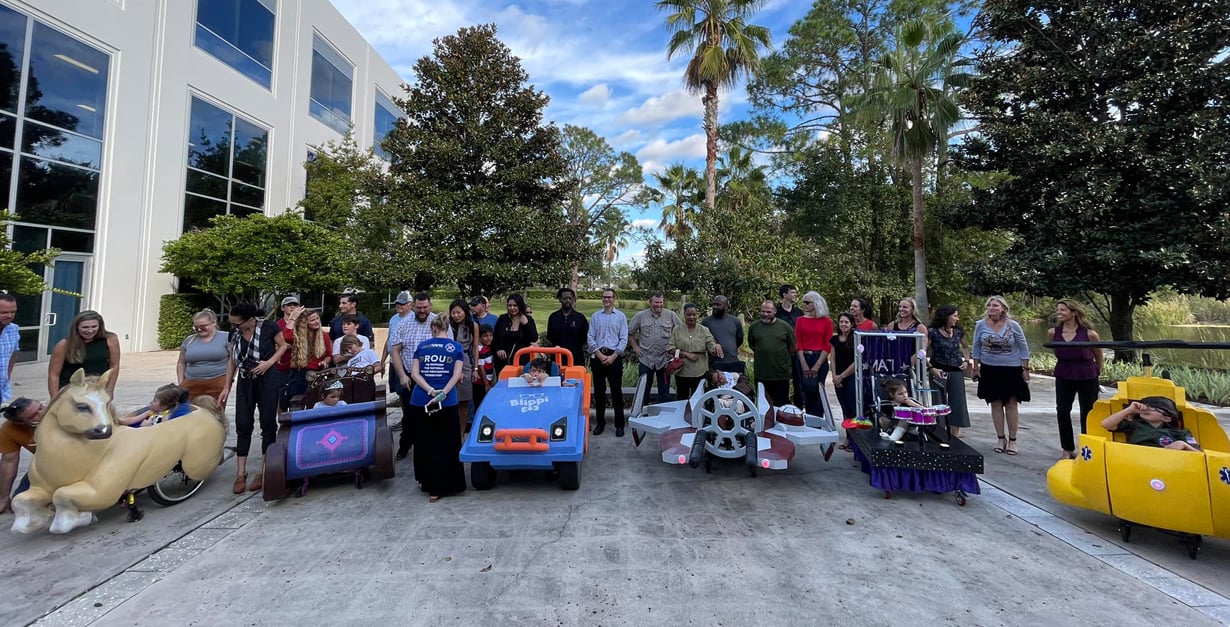For the past nine years, the architecture and engineering firm RS&H has partnered with The Center for Independent Living in Jacksonville, FL to provide custom-built Halloween costumes for children with disabilities. The partnership, now known as Jax Adaptive Halloween Costumes, started with one costume and now they provide multiple costumes every year. The Jax Adaptive team shared how their wheelchair-friendly Halloween costumes are carved out of lightweight foam and then coated with Rosco FlexCoat® to provide a protective layer that can be easily painted.
A wonderful example of their work is a horse costume that they made for a young girl named Pearl, who is a wheelchair user. Pearl rides a horse named Ringo as a part of her physical therapy – and she just adores him. The team at Jax Adaptive took on the task of creating a personalized Ringo costume that Pearl could “ride” while she was trick or treating.
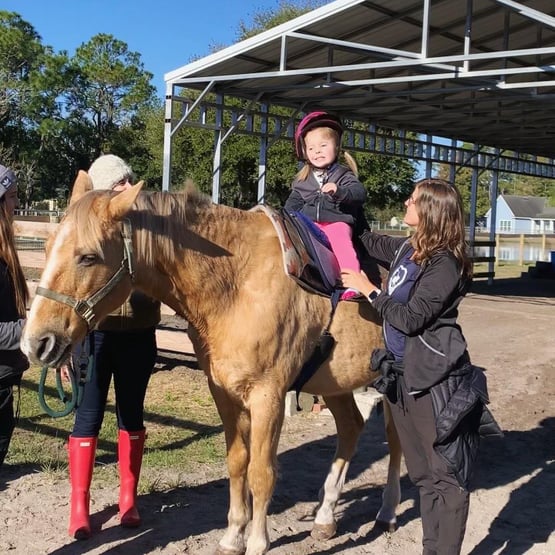
The Adaptive Costume Design Process
To start the design of Ringo, the Jax Adaptive team worked with Pearl to measure her wheelchair and observe her movements so they could determine the proper fit and size needed for the costume. From there, they fitted Pearl’s wheelchair with a PVC pipe structure that would hold the horse costume in place. Once the fit was good, they designed a horse pattern, then cut several foam pieces and adhered them together to create an overall horse-like shape. From there, they used foam carving techniques to smooth out the layers and create the horse form.
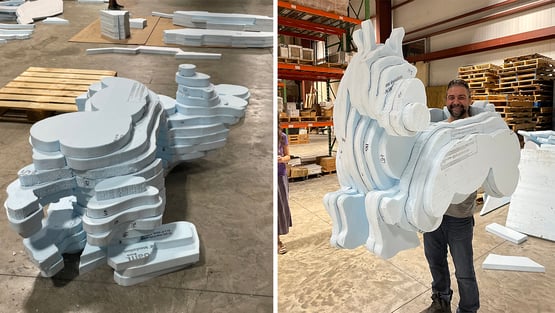
Prepare Foam For Painting With Rosco FlexCoat
At this point, they applied Rosco Flexcoat onto the fragile foam to provide a durable, water-resistant, protective layer for the costume. The FlexCoat layer also makes painting the costume easier by keeping the foam from absorbing the paint.
|
“Prior to using FlexCoat we would paint directly onto the foam,” noted Brandon Pourch, an Architect at RS&H. “This would cause some of the paint to be absorbed and interfere with the semi-gloss finish we were looking for.” So, he asked the question: what do you put on Styrofoam before painting for better results? His answer was Rosco FlexCoat.
|
Brandon appreciated how he was able to essentially use FlexCoat as a universal primer on the costumes to create a comparable base layer. Whether the FlexCoat was applied over the foam or the adhesive, the result was the same and the topcoat had an even, uniform look. Brandon also mentioned that when FlexCoat was used as the basecoat, the final product was more vibrant and glossier compared to costumes they made in previous years that didn’t use FlexCoat.
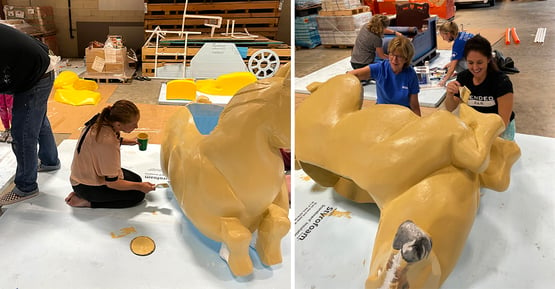
Presenting The Kids With Their Adaptive Costumes!
The Jax Adaptive team always has a great time creating the custom-built Halloween costumes, but the best part is the reveal! Pearl was overjoyed to see her Ringo costume when the Jax Adaptive team presented it to her last year – just look at the smile below! She couldn’t wait to show Ringo off on Halloween night. When Brandon sent us these photos, he told us that: “It was FlexCoat that allowed our true vision for these children’s Halloween costumes to come to life!”
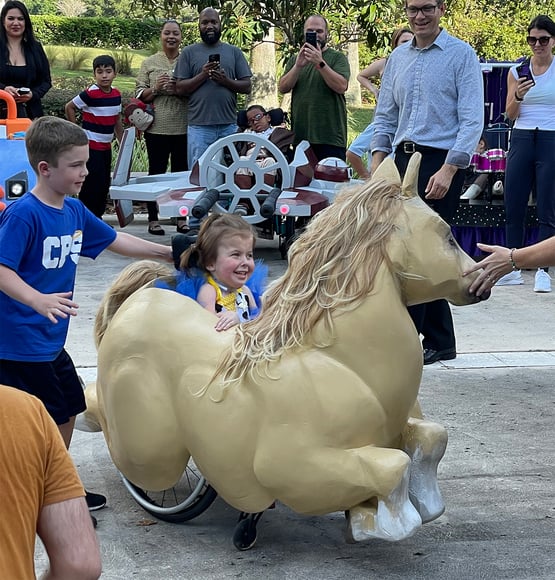
To learn more about this volunteer-based partnership, visit the Jax Adaptive Halloween Costumes Facebook page. For more information about FlexCoat, or our other coating products, visit the Coatings & Glazes page on the Rosco website. Keep scrolling to see more adaptive Halloween costumes that were made using the process described above.
See More Adaptive Costume Designs
Colton’s Helicopter Costume
Mattia’s Elsa Sleigh Costume
Rayquan’s Jedi Starship Costume
Kayden’s Blippi Car Costume
Matti’s Drum Set Costume

